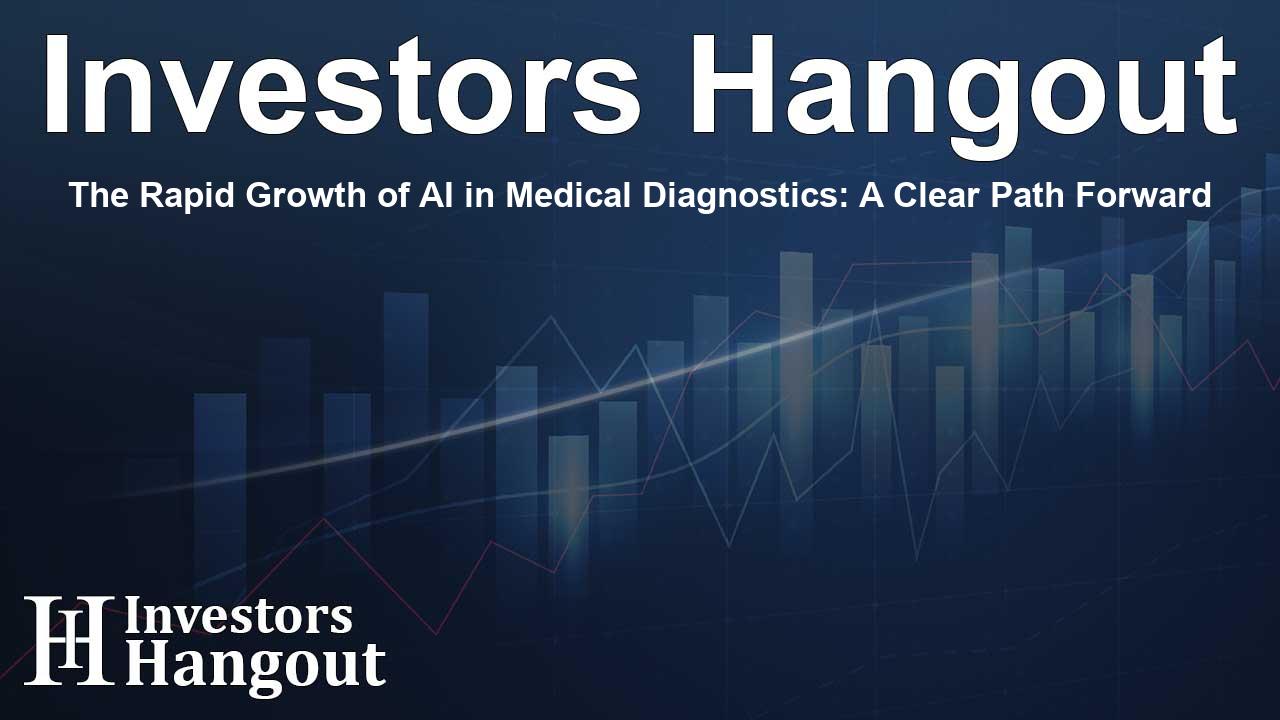The Rapid Growth of AI in Medical Diagnostics: A Clear Path Forward

The Rapid Growth of AI in Medical Diagnostics
In recent years, the healthcare industry has witnessed remarkable growth, particularly through the integration of Artificial Intelligence (AI) in medical diagnostics. This sector is on the brink of tremendous expansion, with forecasted growth rates approaching a staggering CAGR of approximately 22% by 2032. Such rapid expansion underscores the critical importance of AI in enhancing healthcare delivery, particularly for diagnosing chronic and infectious diseases.
Understanding AI's Impact on Medical Diagnostics
Artificial Intelligence is reshaping the way diseases are detected and treated. Utilizing sophisticated technologies, AI enables healthcare professionals to process complex medical data more efficiently, leading to earlier and more accurate diagnoses. By identifying subtle patterns that might escape human observation, AI systems improve treatment outcomes and patient care.
Key Innovations in AI Technologies
The rapid advancement of AI and machine learning technologies is a substantial driver of this market. Continuous enhancements in algorithms and neural networks facilitate better image analysis, pattern recognition, and predictive analytics. Hospitals and clinics are increasingly deploying these technologies, significantly improving patient diagnostics and treatment planning.
Digital Health Transformation
Integration of AI with digital health tools, such as electronic health records (EHRs) and telemedicine platforms, is pivotal. This synergy not only streamlines workflows but also enhances the accuracy of diagnostics, allowing healthcare professionals to provide personalized care based on real-time data analysis.
Driving Factors Behind Market Growth
Several factors contribute to the robust growth of the AI in medical diagnostics market:
- There is an increasing burden of chronic diseases, including cardiovascular conditions and diabetes, fueling the need for precise and rapid diagnostics.
- The growing investment in research and development across various sectors of healthcare is leading to innovative AI-powered diagnostic tools.
- Regulatory bodies are increasingly approving AI technologies, fostering an environment conducive to faster adoption of these solutions in healthcare practices.
Regional Insights into AI in Medical Diagnostics
North America is positioned to be a dominant force in this market, buoyed by well-established healthcare systems and significant investments in advanced medical technologies. The region accounts for a substantial share of the global market due to a high prevalence of disease, robust research capabilities, and a favorable regulatory landscape that promotes innovation in AI diagnostics.
Prominent Players in AI Medical Diagnostics
Numerous companies are making strides in the AI in medical diagnostics landscape, including leaders like GE HealthCare and Siemens Healthineers. Their innovative approaches and cutting-edge technologies are setting new standards in diagnostic accuracy and operational efficiency.
Challenges and Barriers to Adoption
Despite the growth potential, several challenges hinder the broader adoption of AI technologies in medical diagnostics:
- The existing shortage of skilled healthcare professionals poses a challenge. AI tools, however, can alleviate some of this burden by automating routine tasks, thus allowing specialists to focus on more complex cases.
- Potential resistance to change within healthcare organizations can delay the integration of new technologies. Developing training programs and emphasizing the benefits of AI are key to overcoming such barriers.
Conclusion: The Future of AI in Medical Diagnostics
The AI in medical diagnostics market is poised for transformative growth. The significant advancements in technology, coupled with necessary investments and a commitment to innovation, are driving this evolution. As AI continues to develop, it will undoubtedly enable healthcare providers to deliver more timely and accurate diagnoses, ultimately leading to improved patient outcomes.
Frequently Asked Questions
What is the expected growth rate of the AI in medical diagnostics market?
The AI in medical diagnostics market is anticipated to grow at a CAGR of approximately 22% by 2032.
What role does AI play in improving diagnostic accuracy?
AI enhances diagnostic accuracy by analyzing complex medical data and identifying patterns that may be overlooked by human clinicians.
Which regions are expected to lead the AI in medical diagnostics market?
North America is projected to lead the market, owing to its advanced healthcare infrastructure and significant investments in AI technologies.
What are the primary drivers of market growth?
An increase in chronic diseases, advancements in AI technologies, and higher investments in healthcare R&D are the key drivers of growth.
How do AI systems support healthcare professionals?
AI systems assist healthcare professionals by automating routine diagnostic tasks, allowing them to focus on complex patient care decisions.
About The Author
Contact Olivia Taylor privately here. Or send an email with ATTN: Olivia Taylor as the subject to contact@investorshangout.com.
About Investors Hangout
Investors Hangout is a leading online stock forum for financial discussion and learning, offering a wide range of free tools and resources. It draws in traders of all levels, who exchange market knowledge, investigate trading tactics, and keep an eye on industry developments in real time. Featuring financial articles, stock message boards, quotes, charts, company profiles, and live news updates. Through cooperative learning and a wealth of informational resources, it helps users from novices creating their first portfolios to experts honing their techniques. Join Investors Hangout today: https://investorshangout.com/
The content of this article is based on factual, publicly available information and does not represent legal, financial, or investment advice. Investors Hangout does not offer financial advice, and the author is not a licensed financial advisor. Consult a qualified advisor before making any financial or investment decisions based on this article. This article should not be considered advice to purchase, sell, or hold any securities or other investments. If any of the material provided here is inaccurate, please contact us for corrections.
